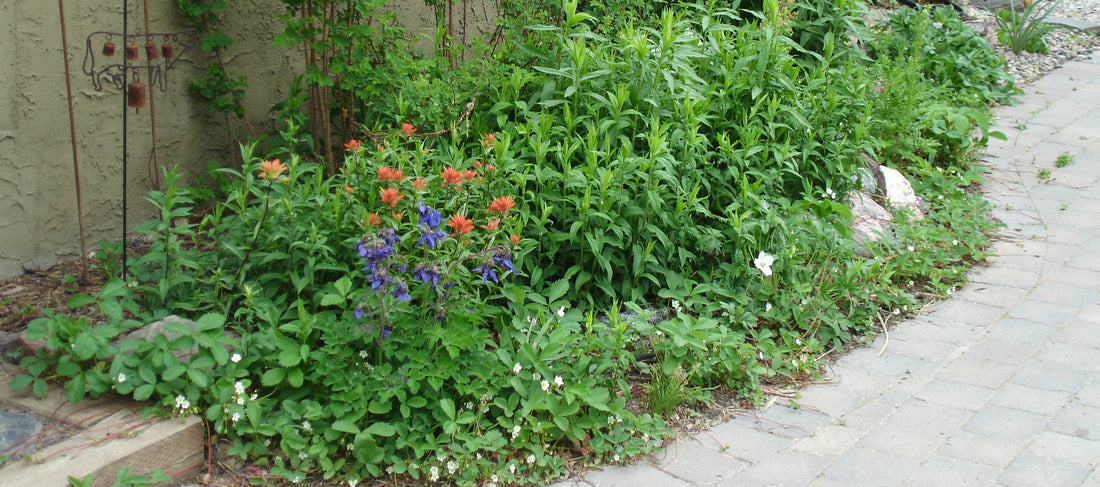
Identifying Your Site Conditions
Share
When it comes to planting native wildflowers—or anything, really—understanding your site conditions is one of the best ways to set yourself up for success. Taking the time to assess the sunlight, exposure, soil type, and moisture levels at your site will help you choose the right plants and reduce the time and effort needed for maintenance later on.
Sunlight
Knowing how much sun an area gets—and when—will help determine what kinds of plants will thrive there. Not all sunlight is created equal: morning sun, afternoon sun, and late-day sun each affect your garden differently.
- Afternoon sun is the most intense. A space that only receives sun after noon will experience a sudden and dramatic rise in temperature.
- Areas that get morning and/or late-day sun may have gentler light overall, even if the total hours of sunlight are the same.
General Guidelines:
- Full Sun: More than 6 hours of direct sun per day, especially in the afternoon.
- Part Shade: Less than 6 hours of sunlight, usually early or late in the day.
- Light Shade: Dappled sunlight throughout the day (e.g., near shrubs, under open trees).
- Shade: Little to no direct sun, often filtered through dense foliage.
Site Exposure
Exposure refers to how much protection an area gets from wind and sun, thanks to nearby trees, shrubs, buildings, hills, or fences. This is especially important in Chinook zones.
- In exposed areas, drying winter winds can melt snow cover, reduce humidity, and increase plant stress.
- Woody ornamentals may suffer winter dieback, and perennial crowns can dry out or get damaged from repeated freeze-thaw cycles.
Even native plants need the right conditions. For example:
- Brown-eyed Susan (Gaillardia aristata) is well suited to open prairie.
- Paintbrushes (Castilleja spp.) prefer open woods and won’t thrive in a fully exposed, windy space without shelter.
Soil Composition & Moisture
A good foundation is everything—and for plants, that foundation is soil. Understanding what your soil is made of will help you choose plants that are likely to thrive, not just survive.
Main Soil Types
-
Sandy Soil
Light, porous, and gritty. Drains quickly and is easy to work, but doesn't hold nutrients well. If your pH is lower than 5 (rare in Alberta), amend to reduce acidity. -
Loam Soil
A balanced blend of sand, silt, and clay. Crumbles easily, holds moisture well, and has a good nutrient profile. This is the gold standard for most plants. -
Clay Soil
Heavy and dense. Holds water and nutrients well but drains slowly. Feels smooth, sticky when wet, and breaks into clumps when dry. May need to be amended for better workability.
You can test your soil by taking a small amount when it's evenly moist (not soaking wet), and rubbing it between your fingers or squeezing it in your hand.
Soil Moisture Conditions
- Dry Soil: Sandy or gravelly; drains quickly and rarely holds standing water.
- Well-Drained Soil: May hold water briefly after rain but dries out shortly after.
- Moist Soil: Retains water in the subsoil; may have standing water in spring or after heavy rain but generally holds good moisture through the season.
Depending on your site and goals, you may choose to amend your soil (with compost, manure, sand, etc.) or simply select plants that match the existing conditions.
Match Plants to Conditions
When you know your sun, soil, and exposure conditions, plant selection becomes much easier—and much more successful. Choosing the right plant for the right place means less watering, less weeding, and fewer surprises down the road.
🌿 Nature already figured this out. Native plants that evolved in your region are naturally adapted to the conditions you're working with—making them the most reliable and resilient choice for long-term success.
